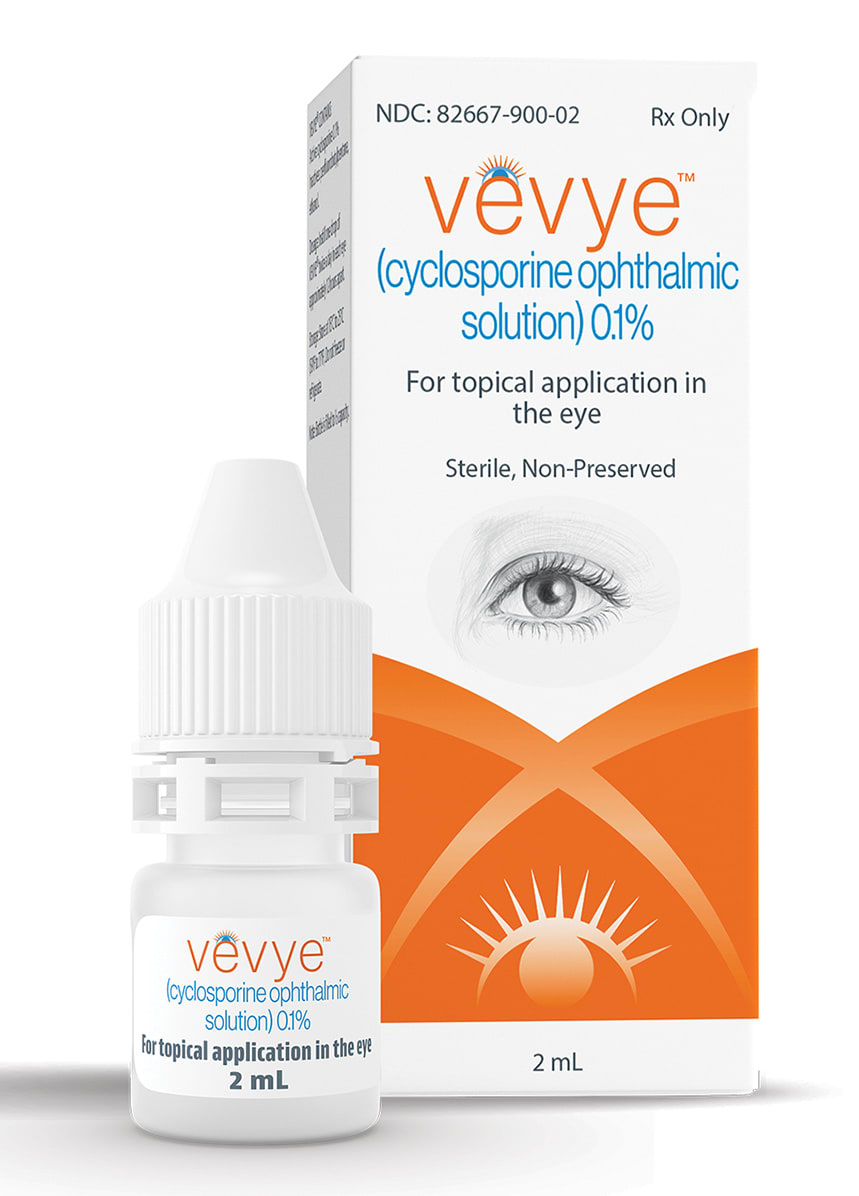Eleven microliters is tiny. Couple this with patient tolerability and efficacy, and one begins to understand why patients using Vevye (cyclosporine ophthalmic solution 0.1%, Harrow) are satisfied. Vevye was FDA approved in May 2023 for the treatment of the signs and symptoms of dry eye disease (DED) resulting from inflammation.
Here, Drs. John D. Sheppard, Alice Epitropoulos, and Richard Adler discuss these attributes.
Tolerability
In pooled studies, Harrow found that 99.8% of patients experienced no or mild instillation site irritation.1,2
Dr. Sheppard, professor of ophthalmology at Eastern Virginia Medical School, in Norfolk, Va., is the lead author of the phase 2b/3 ESSENCE study, which reported on the efficacy, safety, and tolerability of the therapy for Cornea. He states that these attributes are linked to formulation. Vevye cyclosporine 0.1% ophthalmic solution is both preservative free and utilizes a proprietary EyeSol water-free semifluorinated alkane technology, perfluorobutylpentane.
The benefits of the semifluorinated alkane molecule, in particular, are its ability to cover the eye and persist on its surface, while also acting as a solubilizing vehicle for cyclosporine. The lack of water and, thus, preservatives, osmolarity, and pH, are unique additional benefits to patient comfort, he explains.

To educate her patients on how to administer the drop to ensure precise delivery, Dr. Epitropoulos, at The Eye Center of Columbus, Ohio, says she created the following patient script on drop instillation:
“Squeeze the bottle to get the air out, instill the drop, keeping it squeezed. After placing the bottle back on the table, counter, etc., unsqueeze it. This technique allows the drops to last longer.”
Efficacy
Pooled data from clinical trials indicate that approximately 56.5% of patients showed clinically and statistically significant improvement in total corneal fluorescein staining at Day 15, and the result of an open-label extension (OLE) study revealed that Vevye sustains improvement over 12 months, according to Harrow.3
The benefits to the patient shown in the OLE study, via improvements in Schirmer’s test scores, symptoms, and corneal staining, points out Dr. Adler, who practices at Belcara Health, in Baltimore, are indicative of the strength of this drop.
“When we think about chronic dry eye disease, onset of action of an intervention is a sliver of time in the timeline of a chronic disease. It happens once,” he adds. “This durability of effect, however, never stops.”
Dr. Epitropoulos says that her patient experience has been consistent with that of the clinical trials, including an improvement in DED symptoms and corneal staining.
“Most patients come back with an improvement in the way that their eyes feel,” she emphasizes. “They don’t feel like their eyes are as irritated or as dry as they were before. Oftentimes, I hear patients stating that their vision has improved on therapy too.” CP
References
1. Sheppard JD, Wirta DL, McLaurin E, et al. A Water-free 0.1% Cyclosporine A Solution for Treatment of Dry Eye Disease: Results of the Randomized Phase 2B/3 ESSENCE Study. Cornea. 2021;40(10):1290-1297.
2. Akpek E, Wirta DL, Downing JE, et al. Efficacy and Safety of a Water-Free Topical Cyclosporine, 0.1%, Solution for the Treatment of Moderate to Severe Dry Eye Disease: The ESSENCE-2 Randomized Clinical Trial. JAMA Ophthalmol. 2023;141(5):
459-66.
3. Wirta D, et al. Long-term Safety and Efficacy of a Water-Free Topical Cyclosporine 0.1% Ophthalmic Solution for the Treatment of Dry-Eye Disease: ESSENCE-2 OLE. Cornea. 2024 May 21.








